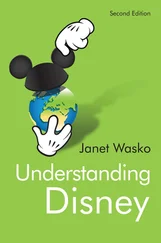Interestingly, then, some of the best sexuality data, including the best data on the prevalence of asexuality, may come from national samples that are not, per se, sex surveys. Thus, the NSFG survey mentioned above may be a better survey to assess asexuality than the NATSAL surveys, because the former was a “general health survey.” However, as mentioned, this study also has its problems: no clear asexuality measure and a restriction of age range.
So, how many people are asexual? We do not know for sure, as there are different problems—such as volunteer bias, lack of a long-term time frame, and questions about how best to define asexuality—with each of the national studies mentioned above. However, the original estimate (Bogaert, 2004) of 1 percent may not be a bad one, all things considered, and it is possible that it may underestimate the true number of asexual people. [16] Although they should be viewed with a high degree of caution, there have also been a number of relatively modern nonrepresentative surveys that provide some information on the prevalence of asexuality. In late 2004, when the popular press surrounding the issue of asexuality became heightened, CNN conducted an Internet poll on sexual identity. They asked people to report their sexual orientation using four categories (straight/heterosexual, gay/homosexual, bisexual, or asexual). Approximately 110,000 people responded, of whom 6 percent reported that they identify themselves as “asexual” (CNN.com, 2004, October 14). Furthermore, using a U.S.-based convenience sample of adults, one researcher reported that about 10 percent of women and 5 percent of men indicated that they lacked sexual attraction to either men or women (Nurius, 1983).
But why is the prevalence of sexual minorities of interest at all? Does it matter how many people are gay, lesbian, bisexual, straight, or asexual? Yes, it does—both to scientists and nonscientists alike, and for a variety of reasons. One scientific reason is that sexual orientation is a fundamental aspect of human variability, and thus understanding the prevalence of heterosexuality, bisexuality, homosexuality, and asexuality helps to map the distribution of human sexual variability. Second, the prevalence of sexual minorities is of interest to groups who want to use the figures to support a political cause or a social issue. For example, some anti-gay groups are interested in the rate of homosexuality (particularly if it is low) to try to demonstrate that homosexuality is statistically rare and thus gay people should be considered abnormal, pathological, or at least a fringe element of society. [17] It should be pointed out that interest in these figures for political purposes is partly based on faulty logic. Statistical rarity, at least by itself, is not a good criterion for demonstrating pathology or the lack of it—consider, for example, extreme musical talent (see more on this in chapter 9). It is also illogical (and insensitive) to treat a group of individuals unfairly and inhumanely based solely on their prevalence rate in society.
In contrast, gay, lesbian, and asexuality advocacy groups are interested in the rate (particularly if it is high) to demonstrate the opposite: that being a sexual minority is not uncommon or statistically abnormal, and that sexual minorities form a significantly large segment of society. A third reason why the sexual minority prevalence rate is of interest is because of the science of demography. As mentioned in the introduction (chapter 1), demographers are interested in how many members of sexual minorities there are, because their prevalence relates to, among other things, trends in marriage and fertility (how many people marry and/or have children). Fourth, the prevalence of sexual minorities relates to physical health issues and, thus, is of interest to epidemiologists and health-care workers. A recent example concerns male homosexuality and the HIV/AIDS pandemic. HIV/AIDS in Western societies has been largely related to male-male sexual contact. As such, understanding the prevalence of male homosexuality can help with understanding the causes of this disease and tracking changes in it in Western societies. Indeed, some of the national probability surveys of human sexuality mentioned above (e.g., NATSAL-I, NHSLS) (Johnson et al., 1994; Laumann et al., 1994) were funded by government agencies wanting accurate information on people’s behavior as it relates to HIV/AIDS. Fifth, prevalence rates of sexual minorities are also important from a mental health perspective. As many people are aware, discrimination against gays, lesbians, and bisexuals is still a societal problem (Herek, 2000; Herek, 2002). Moreover, the “coming out” process is often stressful for sexual minorities. For example, one study found that a very high percentage of gay men (approximately 90 percent) felt troubled, many “extremely so,” when coming out to their parents (D’Augelli, 1991). But what about asexuals—are they also subject to discrimination and to significant stress in coming out? There is much less research on this issue but, interestingly, there is recent evidence that asexual people may, in fact, be viewed more negatively than gays, bisexuals, and lesbians (see more in chapter 7) (MacInnis & Hodson, in press). Thus, accurate knowledge of sexual minority prevalence rates helps workers in mental health care gauge the size of, and potentially address, this mental health concern facing society.
In the final part of this chapter, I explore people’s reactions to the idea that a certain percentage (e.g., 1 percent) of humanity is, in fact, asexual, including the “As if!” reaction mentioned earlier.
At the outset, though, let me offer one qualification. Despite the “As if!” reaction introduced this chapter, I do not want to leave the reader with the impression that all people have reacted with disbelief—many, if not most, people have seemed to accept that a small minority of humanity is asexual. Also, as I will discuss later in the chapter, some have actually indicated surprise that the original figure (1 percent) is so low. Relatedly, my sense is that some people have reacted with relief to the suggestion that a certain percentage of humanity is asexual. Why relief? I think some people may feel relieved, if only secretly, to know that not all people are extremely sexual beings, or that one does not have to be extremely sexual to be a contented, functioning person in society. There is a lot of pressure to be very sexual in our society (e.g., from the mass media; see also chapter 7 on identity formation), so knowing that some people are completely asexual, and perhaps relatively happy being so, may be a bit of a relief for some (average) sexual people. It takes the pressure off them to know that, by comparison, their sex lives are fairly active, and that they do not have to be the super-sexed athlete the media often suggest is the norm.
But let’s come back to the doubters and deconstruct the “As if!” reaction: Why do some people feel that less than 1 percent of the population is asexual, and who exactly are these doubters?
One explanation for the “As if!” reaction is that the doubters are right, and thus their skepticism of this figure may not be misplaced. After all, we may not have an accurate tally of the number of asexual people. Even the sarcasm inherent in this “As if!” reaction may not be misplaced, as the figure could be lower (perhaps even much lower) than 1 percent. Thus, these doubters could be wise people, knowledgeable in the ways of the world, and not easily taken in by potentially misguided scientific claims.
A second explanation is that this skepticism reflects, at least partly, a human tendency to believe that everyone must be just like us. Social psychologists have labeled this bias the false consensus effect (e.g., Ross, Greene, & House, 1977). Thus, if I feel sexual, then everyone else must be sexual too, or just as sexual as I am. So, it is an understandable reaction that some people can’t believe in asexuality, because everyone, at times, is prone to these kinds of false consensus reactions. We all live in our little insulated worlds, and it is sometimes hard to imagine that something very different exists beyond it. [18] Even though we all have this bias to some degree, one of the more intriguing experiences in life is, arguably, being faced with the incontrovertible evidence of human diversity. It often makes our lives richer, although perhaps a lot less predictable. So, while we may want to believe (and hope) that everyone is like us, when faced with evidence to the contrary, it may be initially threatening but, ultimately, often life affirming.
Читать дальше












